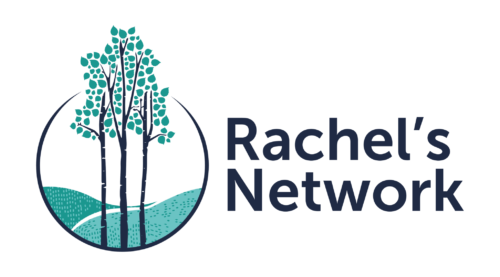It’s well-documented that women and people of color are underrepresented in the leadership of large environmental groups. A number of environmental NGOs and foundations are taking steps to address the problem by pledging to submit their diversity data through Green 2.0.
In light of this project, we reached out to Rachel’s Network Liaisons, women CEOs of major environmental nonprofits, to ask them about their own organizations’ diversity initiatives. Responses from Jamie Rappaport Clark of Defenders of Wildlife, Suzanne Ehlers of Population Action International, Annie Leonard of Greenpeace USA, and Stephanie Meeks of the National Trust for Historic Preservation reveal that supporting inclusion is about much more than numbers: it’s an approach that has to be built into the very fabric of the environmental movement.
Have you undertaken diversity/equity initiatives at your organization? Any lesson-learned from this experience?
Jamie Clark: Diversity isn’t just race/ethnicity/gender/sexual orientation of executives, staff, and board members. We should also be looking at the communities that are impacted by our programs as measures of success. Our work with the Assiniboine and Sioux Tribes of the Fort Peck Reservation to return bison to tribal lands stands as a national example for how reaching across cultural barriers can strengthen conservation. I’m proud that 50% of our senior leadership at Defenders of Wildlife is female, and 29% self-identify with at least one other diversity characteristic (race, ethnicity, sexual orientation). We still have a long way to go in recruiting greater racial and ethnic diversity into leadership, but I don’t feel that can be the sole metric of success.
Suzanne Ehlers: We are about to embark on an anti-oppression/inclusion training, mandatory for all staff. We believe it’s really important for any group of people working together on a daily basis to pursue this kind of training, but especially for PAI as an international human rights organization working with partners in other countries and across various other (often marginalized) constituencies.
Annie Leonard: Greenpeace has created a staff-led Diversity & Inclusion Council, which facilitates discussions and trainings, and makes recommendations to HR, programs, and leaders. They can’t do it alone though; their success requires strong leadership to demonstrate commitment at all levels.
I have two lessons to share. First, working on diversity and inclusion is a journey with no end point. It’s an ongoing process to evolve our culture, behavior, structures and policies to be more welcoming. Second, we won’t succeed if narrow boundaries are drawn around diversity and inclusion efforts. Sure, demographics and HR policies are important, but we need to ask ourselves what it means to really embrace racial justice, gender justice, social justice in all our work – program as well as operations. Our organizations can become stronger and smarter through diversity.
Stephanie Meeks: The National Trust has had a deliberate commitment to diversity for more than a decade. We codified it in our Statement of Values and strive to make it part of every employee’s work. More than 40 percent of our work is to protect places that reflect the diverse histories of our country. This has created a virtuous cycle: new partnerships enable us to recruit diverse staff and Trustees who are attracted, in large part, to this work. Our HOPE Crew youth volunteer program engages primarily diverse youth in preservation-skills training, and we have achieved 20 percent diversity in our staff and 30 percent our Board. The most important lesson we’ve learned is that the value of diversity must be aligned with the core mission of the organization.
How has your field’s approach to diversity changed since you started your career?
JC: The Federal Government has come a long way in their approach to encouraging greater diversity in more senior positions, and I was a vocal advocate for diversity initiatives when I led the Fish and Wildlife Service. It’s a bit more challenging in an organization of only 135 positions, like Defenders. We don’t have the ability to rotate people into different departments for learning experiences, nor do we have the budgets to launch major national recruitment efforts. That said, there are ways we can be more effective in recruiting diverse candidates. We are looking at where we recruit, how to expand internships, and reaching out through new networks to announce positions.
SE: As an environmental grantmaker at Wallace Global Fund from 1996-2001, I co-chaired the annual retreat for the Environmental Grantmakers Association. We very intentionally themed the conference “Just Change”, both to invoke urgency (just change, already!) and a sense of justice and equity (not any change, but just change). Rhea Suh, then at Hewlett and now at the helm of NRDC, was our keynote and to think of her remarks—as a young woman of color environmental grantmaker—is quite extraordinary, both in how much has changed and how much, sadly, some structures and vestiges of power and privilege have not. Now as a member of the Green Group, we are involved with the Board Members of Color exercise; the Building Equity and Alignment for Impact initiative; and the Green 2.0/GuideStar/D5 effort. Now these issues of diversity and inclusion feature at practically every meeting!
SM: For many years, the field of historic preservation focused on the “great men and great houses” of history. In the past decade, through the efforts of the National Trust for Historic Preservation, and many other groups, there has been an embrace of protecting the history of all Americans: African American, Hispanic, LGBTQ, and Women. We see this change reflected in the scholarship in our field, in the surveys that identify places worthy of protection, and in the advocacy for specific places. We see it taking shape at all levels of government and across nonprofit organizations, big and small.
How can funders and board members help advance diversity in our field, especially at the leadership level?
JC: One of the greatest opportunities is to help the community come together in common understanding of what we really want to measure. I fear that we are racing ahead in developing surveys and publishing information that doesn’t fully describe the way we operate. I have a personal commitment to this effort, but I want to make sure that we are thoughtful in bringing ideas to the table.
SM: It is important for funders and board members to reinforce the significance of diversity, not only as the right thing to do, but as a way of ensuring our movements are strong fifty years from now. Given the seismic demographic shifts happening in the US right now – and in the next 30 years—it is an imperative for mission-driven organizations to engage a more diverse constituency. Setting goals as a board and management team, and assessing them annually, is one way to keep the conversation alive.
How can we increase the number of women executives of major environmental NGOs? What advice do you have for women who seek these roles?
JC: Role models are critical to success. It would be worthwhile to identify current and retired women that hold/held leadership positions, find out about their career paths and what advice they now have that they would have offered to themselves 10/15/20 years ago. Setting up opportunities for mentoring other women that are junior in their careers is also important. Encouraging network members to partner with local university/college (or perhaps high schools) to lecture or participate in career day/career fairs would also be a way of sharing success and highlighting careers.
AL: Having access to a peer group for coaching, advice, and even good old fashioned support can help a lot. Being a woman in a leadership role brings specific challenges and opportunities and it’s invaluable to have a community like Rachel’s Network made up of colleagues who “get” it. Along with thinking about racial and gender diversity, I encourage people to think about diversity in family structures. I am a single parent and could not have accomplished all I’ve accomplished without having colleagues who understand that I need to be absent when my daughter is sick or has a big sports competition. My organization even offers a child care stipend for single parents who have to travel overnight. These kinds of support, which prevent me from having to choose between being an engaged parent and an engaged environmental leader, have enabled me to succeed in both arenas.
Any other thoughts on diversity that you’d like to share?
JC: I believe diversification of the environmental movement is happening, but most of us would prefer it happen at a quicker pace. It wasn’t all that long ago that there were very few if any women in key positions. That has been evolving. I hope we get to a place where diversity in the workplace isn’t a project or a program but is accepted as an important business success model and incorporated into the operational and cultural norms of our organizations.


